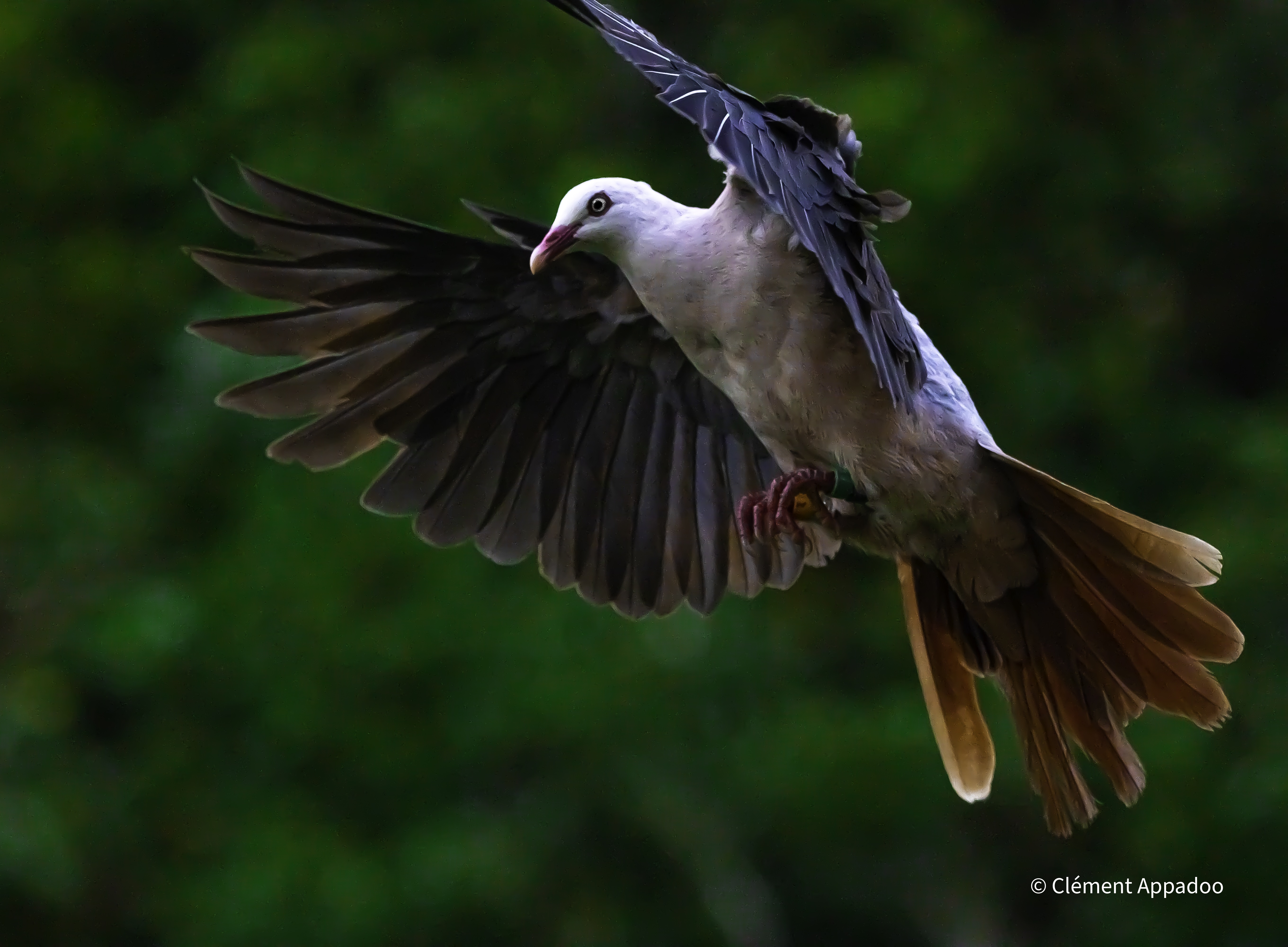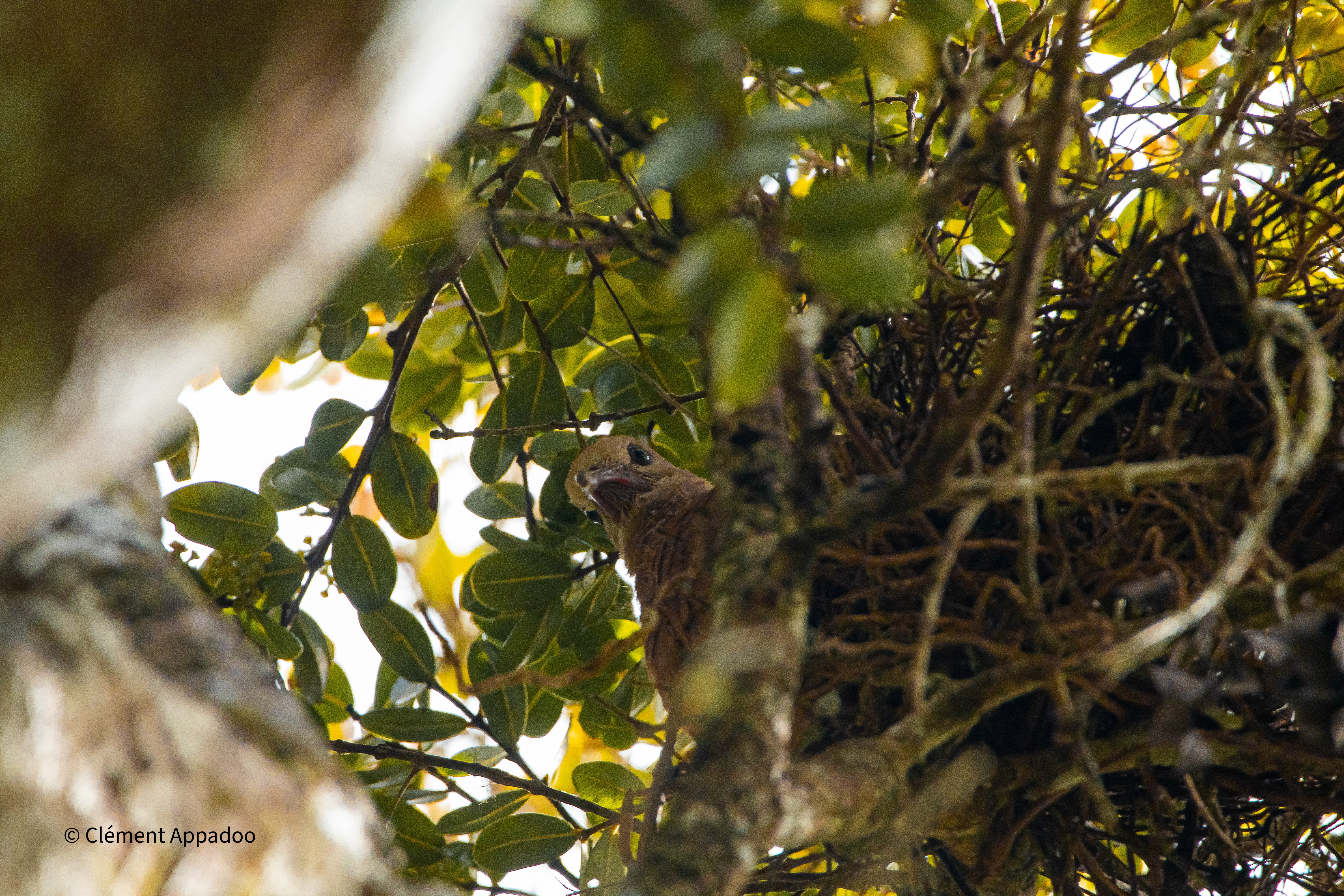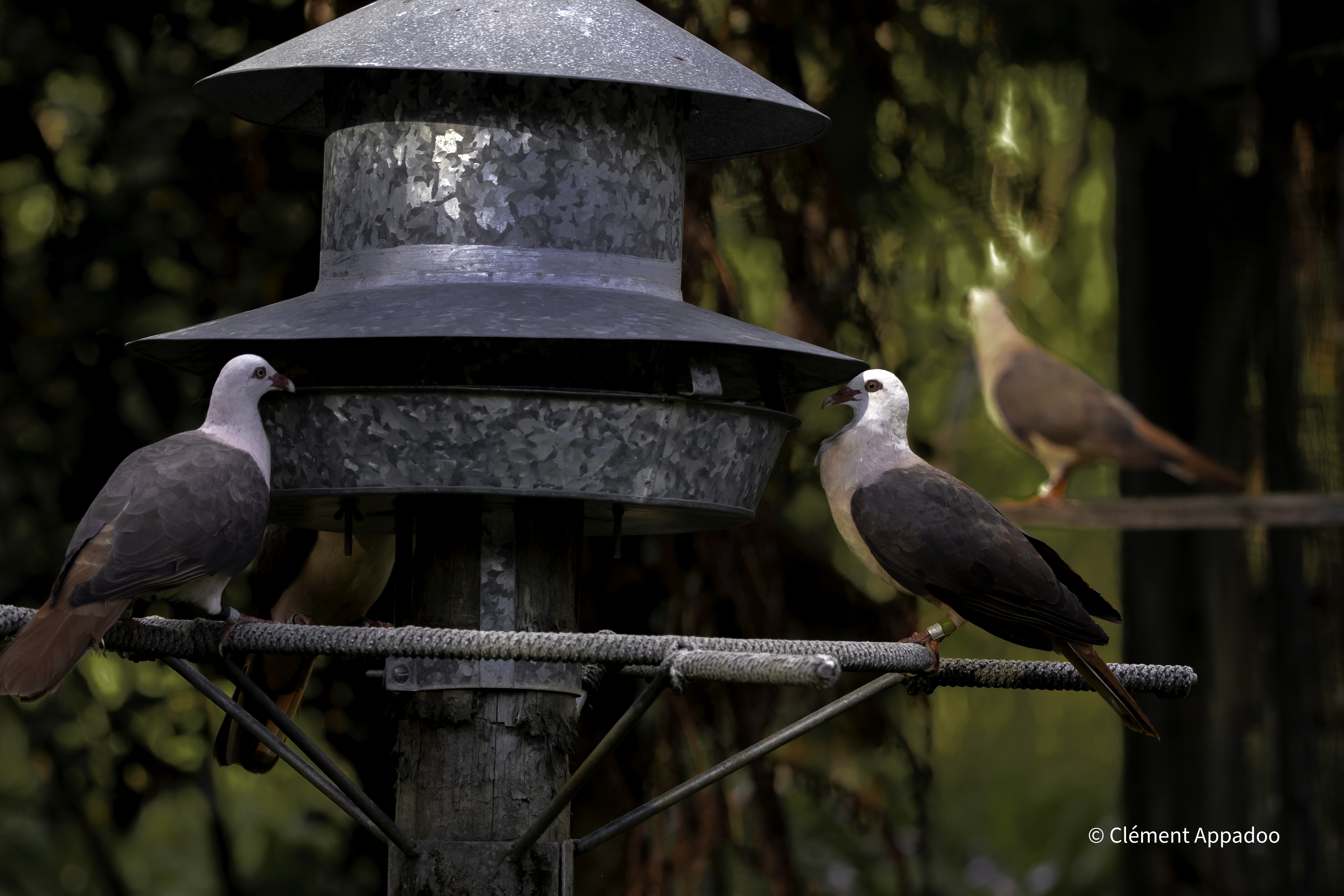News
In the field with the Pink Pigeon team
Nearly extinct in the 1970s when 12 to 20 individuals remained, the Pink Pigeon (Nesoenas mayeri) population, has now grown to over 500 individuals thanks to the efforts from the Mauritian Wildlife Foundation and partners over the past 50 years. Today, the bird can be seen in a few localities in the Black River Gorges National Park, such as Petrin, Brise Fer, Pigeon Wood (Plaine Paul), Alexandra Falls, the Lower Black River Gorges, Combo and Bel Ombre but also at Ferney Valley, Chamarel and on Ile aux Aigrettes. Though the numbers have considerably increased since the 1970s, the last surviving pigeon species in the Mascarenes is still not totally safe. Habitat destruction and degradation, introduced diseases, genetic loss and introduced predators attacking eggs,chicks and adults contribute to the species’ vulnerability.

To ensure this Mauritian endemic bird’s preservation, a dedicated Mauritian Wildlife Foundation team of Mauritians and expatriates spend the whole year looking after it in various sites. The ‘Pink Pigeon team’ supervises the birds daily. We accompanied Akilesh Jodhee (Senior Pink Pigeon staff), Pink Pigeon staff members Atish Neehaul (, Ashley Marianne, Hans Aubeeluck, Owen Kali, and volunteers Clement Appadoo and Jacob Ng for one of their nest searches, one of their main tasks. The species being able to breed all year long (except for a variable moult period between January and March and sometimes additionally between July and August), these searches need to be done routinely. The team searches the forest for signs of breeding, and if a nest is found, details of the nest are recorded, and the progress of the nest is tracked over time to determine the outcome (eggs laid, hatching of eggs, fledging of chicks, predation, destruction, diseases etc). This information contributes to the evaluation of the status of the population i.e. gives an idea of whether the population is ‘healthy’, growing, declining, ageing.
When a nest is found, the team member will observe the nest from the ground using binoculars. The breeding pair (i.e., mum and dad) will be identified by their metal and plastic leg rings and the stage of the nest will be determined i.e. at twigging stage, building stage, nest lining, completed. Essential details on the nest are collected such as height above ground and the tree species and the GPS location noted. “We do not access the nests as they are sometimes fragile. We also do not want to disturb the birds. If there is too much disturbance around the nest, the female might choose to find another spot.” Says Akilesh.

Pink Pigeons are also observed by the team around the feeders ("hoppers”), where wheat and broken maize is provided in hoppers at sites where birds are being managed. “Identifying the birds that visit the feeders allows us to determine whether there is any nesting pattern. If you see the female and male from a pair regularly coming to the feeders alternatively and at different times of the day, you may be able to deduce that they have a nest, and are taking turns to incubate eggs or brood chicks”, says Akilesh. If this is the case, the chick(s) will be fed for 3 to 4 weeks before they fledge from the nest. The full day ‘hopper watch’, as this observation is commonly called, also enables the team to look for unringed birds. The team will then capture and ring the birds as soon as they enter the aviaries. Ringing allows the bird to be individually recognised from then onwards, allowing the team to determine population estimates, survival rates, life histories etc.

One of the team’s multiple priorities is maintaining a safe-haven relatively free of introduced mammalian predators in the areas where Pink Pigeons are managed, which is quite a daunting task. For example, rats are difficult to control as they are well-established in our forests. The team also keeps a close watch on the welfare of the Pink Pigeons and will take care of sick and injured birds.